Tony Wilkins looks at one of the most iconic episodes of The Twilight Zone, it’s original story and the 1983 movie version
There’s a man out there…There’s a man on the wing of this plane.
Richard Matheson could not have possibly known in 1961 when he penned his short story that he would be creating pop culture gold. His idea that only one man onboard an airliner can see someone or something on the wing tampering with the engines has become an iconic piece of television when it was featured in an episode of the cult tv series The Twilight Zone in 1963 starring William Shatner. There followed numerous parodies and even a remake for the big screen movie of the series in 1983.
Richard Matheson’s inspiration for the story came from a World War II legend amongst allied pilots about little creatures that would sabotage aircraft in flight causing them to crash inexplicably. In reality it was a not-so-funny joke among aircrew to explain why some badly made or designed aircraft malfunctioned regularly.
While the three versions differ in their build-up the overall premise remains the same. In the original story Bob Wilson is a borderline suicidal businessman on just another trip across country on a DC-7 airliner. In the 1963 William Shatner episode, Bob Wilson is traveling with his wife after recovering in a sanitarium from a mental breakdown he had on a previous flight. The 1983 movie version dispenses with Bob Wilson altogether and instead John Lithgow plays John Valentine, another businessman but one with a rather severe fear of flying. Regardless of which version you look at the point remains the same; to make everyone around them doubt what they are saying. This is at the very heart of the story being very psychological in nature and even has you the viewer/reader questioning whether it is real or not.
Once the character and his problems have been established the story settles in. In each case Wilson/Valentine are doing their best to try and relax while most of the passengers fall asleep thus reducing the chance of anyone else seeing the gremlin when it appears. The aircraft flies in to a storm but the stewardess reassures him that it is nothing the aircraft can’t handle. Wilson/Valentine find their eyes wandering out the window and that’s when they first see it. At this point it is just a something crawling on the wing. In the original story Wilson thinks that some poor dog or cat has got caught on the wing during take off but quickly he realizes that there is nothing on the smooth wing for the creature to hold on to. In both the 1963 and 1983 Twilight Zone versions Wilson/Valentine both see it as a man from the very beginning.
The pattern of doubt begins with Wilson/Valentine trying to tell the stewardess about it and this happens a few times but each time he tries to get someone else to look outside the creature is not there. This is the fundamental point that makes everyone question his sanity. The story handles this fact better than either of the Twilight Zone versions. In it Wilson believes that the gremlin can see him as well and is toying with him by hiding every time he tries to call someone. In fact during one instance when he tries to summon the stewardess Wilson is very careful to move his arm slowly toward the button to summon her in an effort not to alert the creature. Nevertheless it fails every time and he remains the only person who can see it.
Looking at the 1963 episode the gremlin is quite a close representation of how Matheson described it in his book. The creature is very fury with an almost human face although it is hideously grotesque with its facial features being distorted. The fur was most likely meant to allow it to survive at such cold temperatures. A key feature of this gremlin however is the fact that despite its bulk and lack of wings it is described in the story as being impervious to gravity which is what allows it to fly. By stark contrast however the 1983 movie version is a far scarier looking creature with long dreadlock-style hair, large teeth and a slimey body making it look more like a lanky version of the Predator.
With his efforts to alert the aircraft’s crew a failure Wilson/Valentine becomes particularly agitated when the creature no longer seems content with its wing walking routine and starts to damage the aircraft. This raises the stakes ten-fold. Now, alerting the crew is a matter of life and death but again his efforts are in vain and only further question his sanity. In each version however he is certain of what is out there and feels compelled to do something to save the aircraft even if no one belives him. In each version he gets a gun but through different means. In the short story he carried a gun around his in bag for protection but later as a means of eventually committing suicide. In the 1963 version William Shatner’s Wilson steals a gun from a sleeping police officer while John Lithgow’s Valentine steals it from an FAA sky marshal.
Wilson/Valentine then opens the emergency exit causing the cabin to depressurize sending panic around the aircraft and fires his pistol at the creature successfully fending it off before they land. This scene is perhaps the scariest in the 1983 version. In that one the creature charges forward at Valentine until Valentine runs out of bullets and grabs hold of the terrified man’s face seemingly to kill him. It stops however when the storm breaks and the runway is in sight. The creature then signals to Valentine that it was unsuccessful this time and leaps away. This is perhaps most frightening because the creature displayed intelligence in its actions to sabotage the aircraft whereas in the short story and the original episode the creature showed interest in the aircraft as though it had never encountered one before and wanted to know how it worked. It had lost the cover of the storm and was running out of time to bring the aircraft down so gave up. The idea that there are these creatures in storm clouds plotting and scheming to bring down airliners does play on everyone’s, even experienced flyers, fears.
The last scene of each story sees Wilson/Valentine being carted off on a stretcher. The 1963 version was best portrayed here. There is almost total silence as Shatner’s Wilson is carried out of the aircraft by the ambulance crew. It is very ominous and unsettling as you start to wonder yourself if it was real or not. Wilson remains convinced in all three versions that he has saved the plane. In all three versions of the story the last moments always imply that the gremlin was real with damage to the engine of the aircraft although it could still be attributed to storm damage thus furthering the question of whether it was real or not. The 1983 version does go further however and shows claw marks all over the engine thus implying it was definitely real and finally the crew who were constantly doubting Valentine start questioning it themselves.
There are numerous reasons why the story has become such an icon. It was written at a time when air travel was beginning its massive explosion that would change the world forever. In the 1960s more people flew than ever before and there was still a lot of fear around it. It has to be said that the fact Star Trek’s William Shatner starred in the 1963 version had a part to play in its popularity in later years (Star Trek first aired in 1966 three years after the original episode). Say what you like about Shatner; you have to admit his performance was flawless in the 1963 episode. Lithgow too in the 1983 version gave a wonderful performance that really made me feel like I was watching someone on the verge of a mental collapse. It is worthy noting that when William Shatner first appeared in 3rd Rock From The Sun with Lithgow there was a scene where Shatner says he saw something on the wing of a plane and Lithgow replies “Me too”. You have to love the little nod to their respective roles in this tv legend.
To really demonstrate its impact on pop culture you have to look at the countless parodies that have been made of this story. From The Simpsons to Saturday Night Live, all have taken the opportunity to immortalize the story further to the point where nearly everyone knows the immortal line, “There’s something on the wing” even if they haven’t seen it for themselves and that’s how you know a story is great.


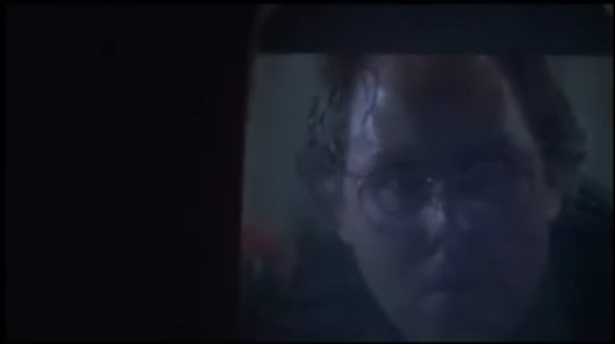
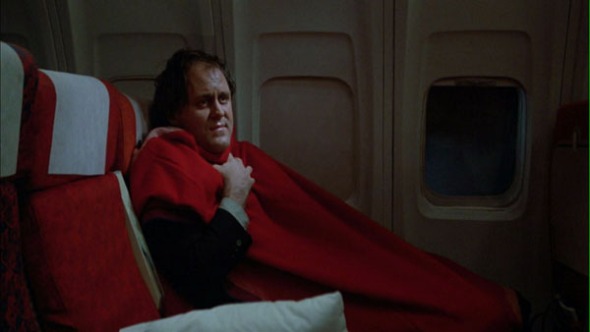
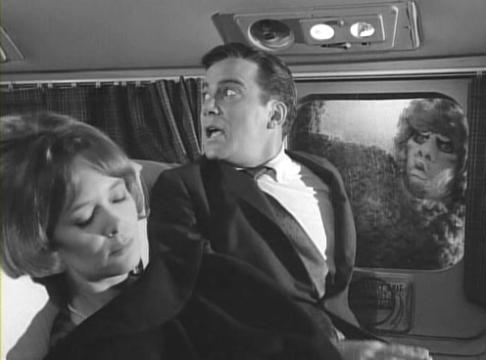
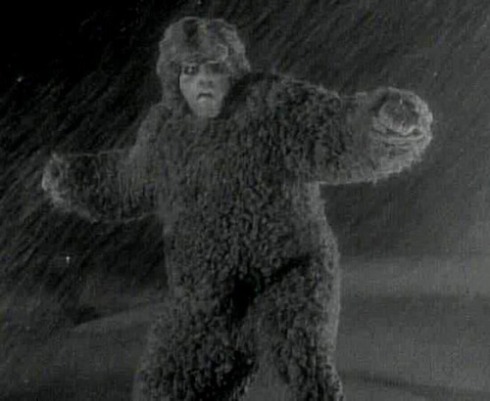
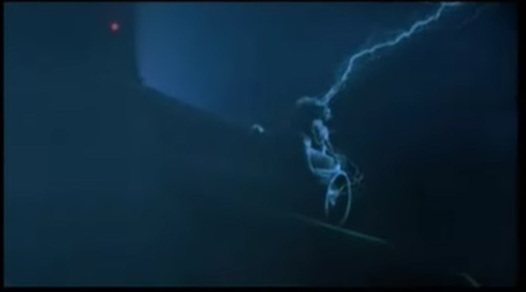
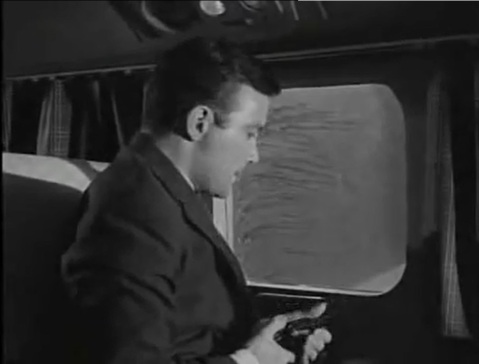
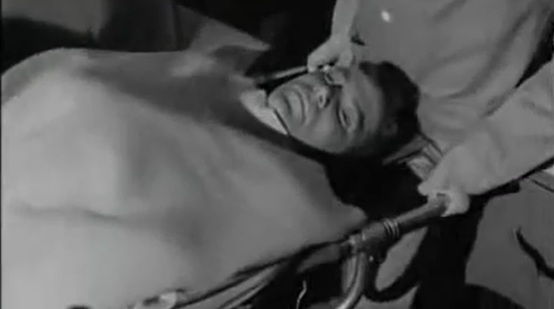
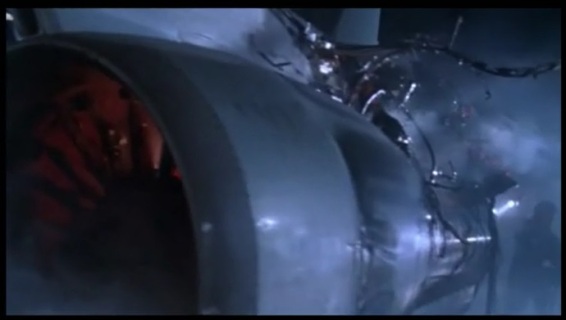
This was a fun post! Nightmare is one of the highlights of season 5.